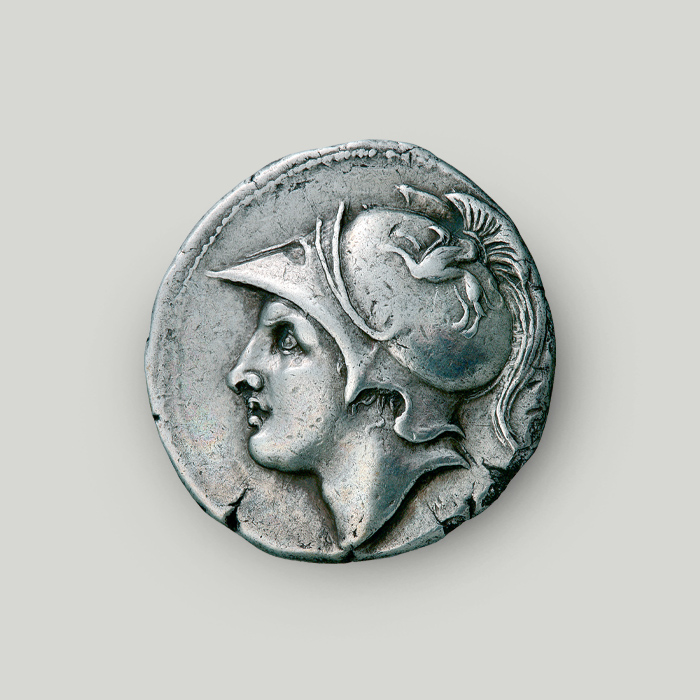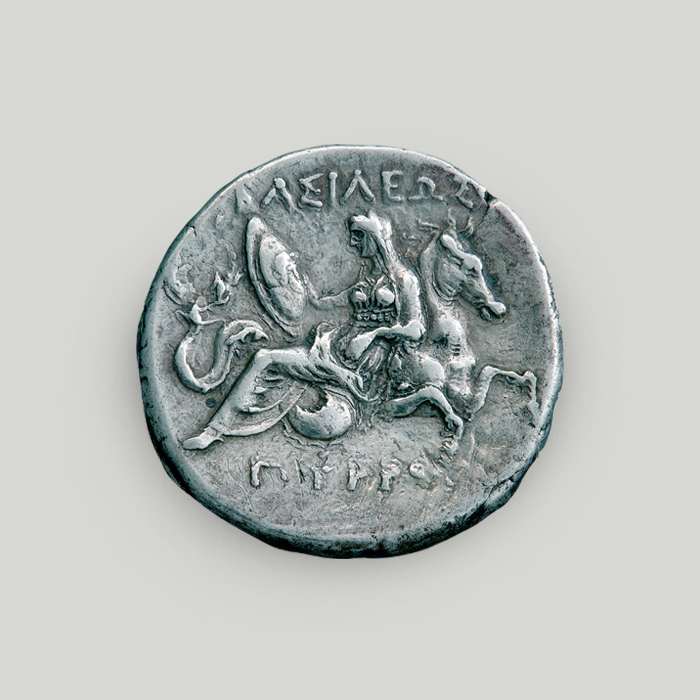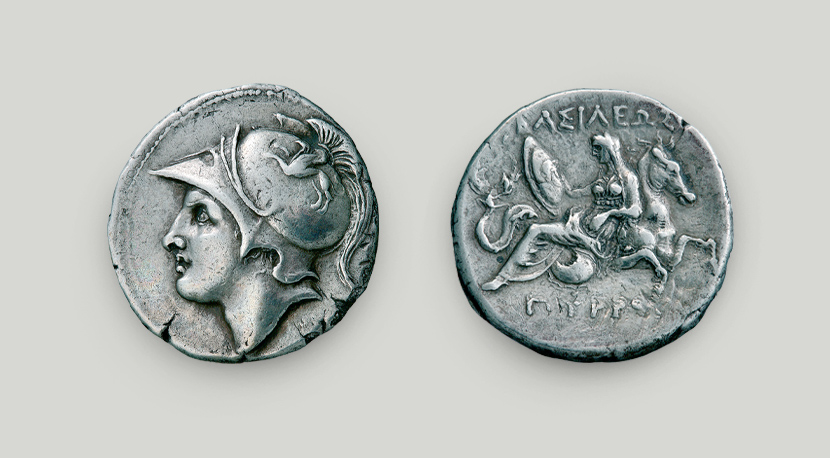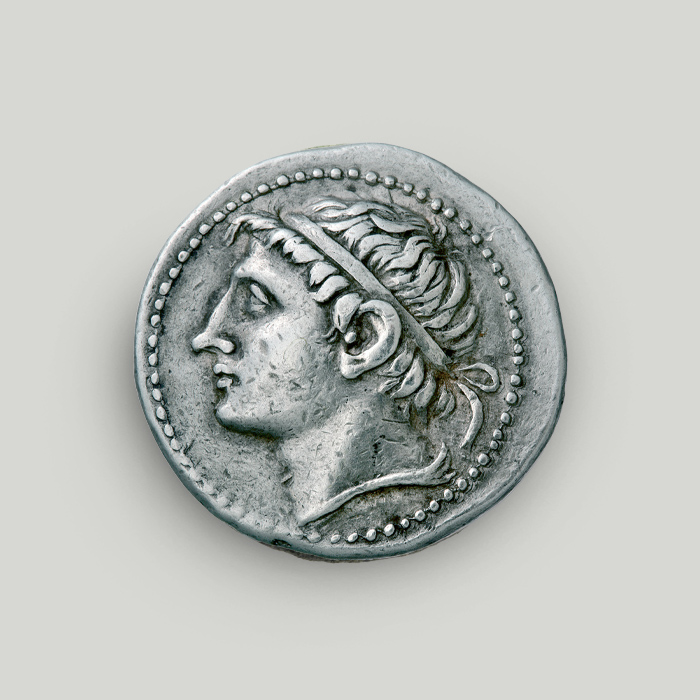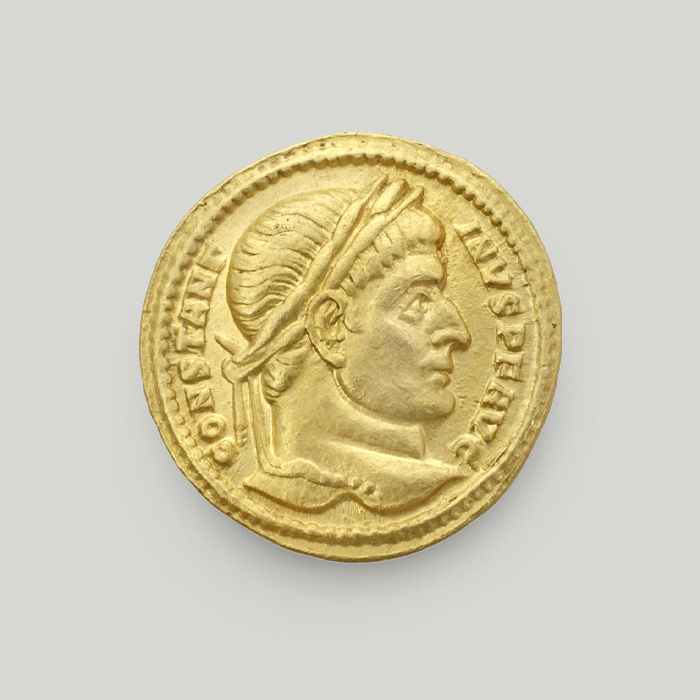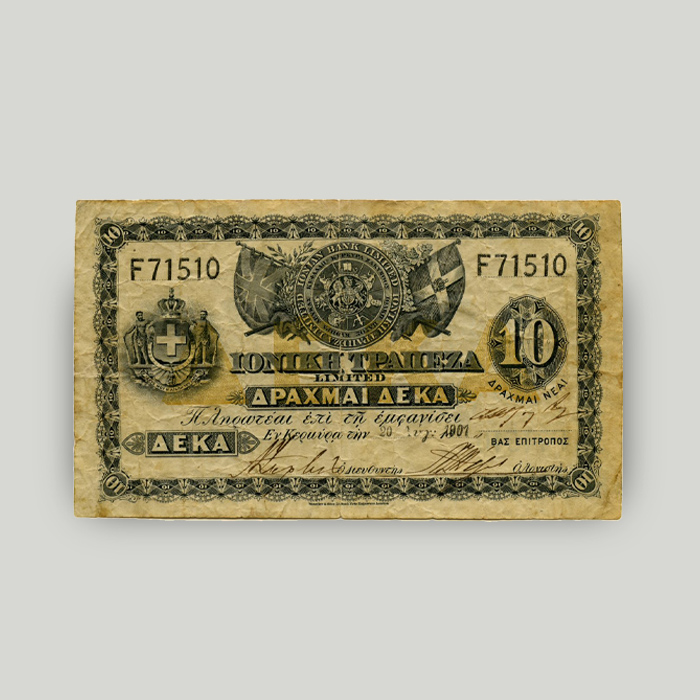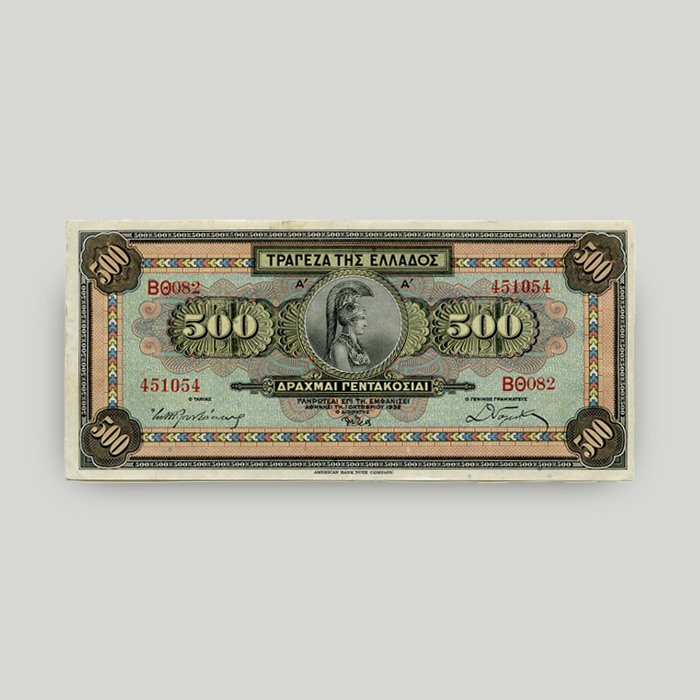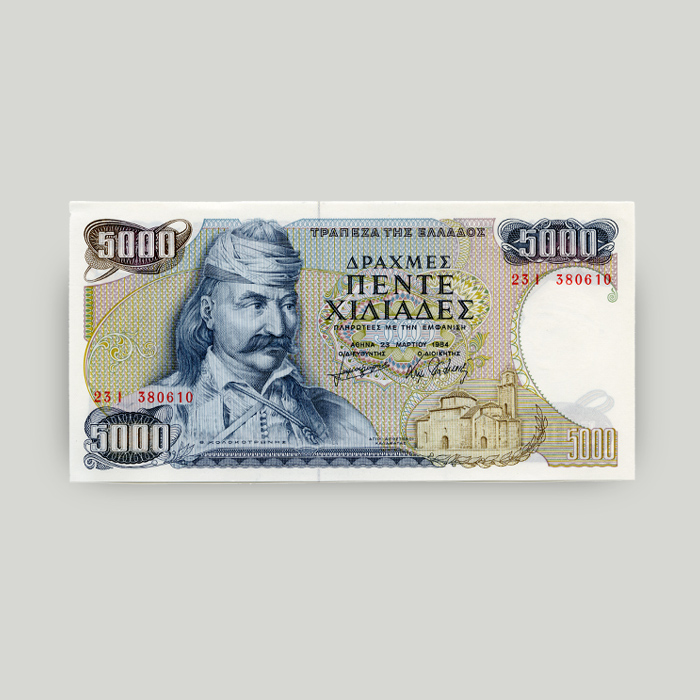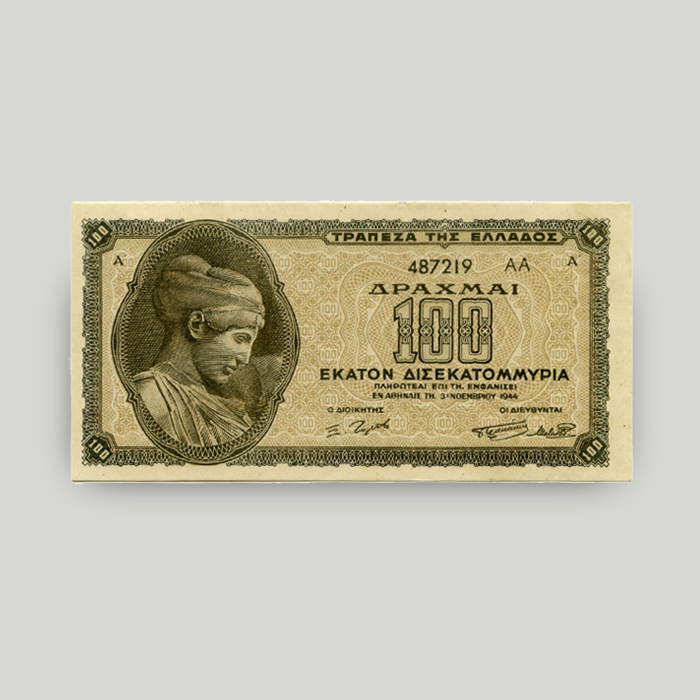Silver stater of Pyrrhus
The silver stater of Pyrrhus, king of Epirus, is one of the rarest ancient coins. Very few have survived to the present day. The obverse depicts Achilles, the main Greek character in Homer’s Iliad. The scene from the Trojan War depicted on the reverse makes the coin one of the most impressive to be issued by Pyrrhus.
Obverse
Head of Achilles in profile facing left, within a circular dotted border.
Reverse
The sea-nymph Thetis astride a seahorse, carrying her son Achilles’ shield. The shield is decorated with a Gorgon head (the head of Medusa). The legend on the top and bottom reads ΒΑΣΙΛΕΩΣ ΠΥΡΡΟΥ (of King Pyrrhus).
The king of Epirus, a prominent figure
Pyrrhus was the son of Aeacides of Epirus, king of the Molossians. He is considered one of the most prominent figures in global military history.
He first ascended the throne of Epirus in 307 BCE. However, a rebellion soon ended his reign. He left Epirus in 302 BCE only to be restored in 297 BCE.
The campaigns and death of Pyrrhus
During his second reign, Pyrrhus significantly expanded his kingdom.
In 280 BCE the inhabitants of Tarentum in Southern Italy asked for his help, and he campaigned into Italy with an army of 25,000 infantry and 20 war elephants. He achieved a chain of victories against Roman and Carthagenian forces but, in the end, he was defeated and forced to return to Epirus.
Upon his return, he immediately invaded Macedon and then organised a campaign into the Peloponnese.
Pyrrhus was killed in battle at the city of Argos in 272 BCE.
A descendant of Achilles
During his campaign in Southern Italy, Pyrrhus issued excellent quality silver coins at the mint of Epizephyrian Locri. This coinage was a conscious attempt to propagandise his descent from Achilles.
The king of the Molossians was a descendant of Aeacus, Achilles’ grandfather. In the context of his propaganda, he tried to identify himself with the Greek hero.
At present, Pyrrhus’ staters depicting the head of Achilles are among the rarest ancient coins, as only very few survive.
The hero on the coin
Following his intimate friend Patroclus’ death during the Trojan War, Achilles’ wrath subsided and the hero decided to return to battle. His desire was to avenge his companion’s death by the hand of the Trojan prince Hector.
However, he no longer had his armour and weapons, as he had lent them to Patroclus. Thetis went to Mt. Olympus on his behalf and asked Hephaestus, god of fire and a skilled metal worker, to forge a new armour.
Hephaestus shut himself in his workshop and put all his craft into making the hero’s new weapons. Particular care went into the shield, which is described in masterful detail in the Homeric Iliad (Book 18, 478-608).
Made by a god and intended to be held before the body of a great hero, the shield could be nothing short of a true masterpiece. Its surface depicted the entire world, with all its beauty, joy and pain.
Staters in antiquity
The word “stater” corresponds to an ancient coin denomination. Etymologically, it is derived from the Phoenician schequel, which denoted a coin weighed to comply with a specific standard.
The weight of a stater varied significantly by region, and according to the weight standard applied by the mint.
The coin in our publications
The silver stater of Pyrrhus is mentioned in the book Money. Tangible Symbols in Ancient Greece, edited by Dr Dimitra Tsangari, Nicholas Stampolidis and Yorgos Tassoulas. The publication accompanied an exhibition of the same title jointly organised by the Museum of Cycladic Art and the Alpha Bank Numismatic Collection. It presents a different side of coins, which first appeared in the late 7th century BCE.
Buy the publication Money.Tangible Symbols in Ancient Greece on the Alpha Bank e-shop.
The Alpha Bank Numismatic Collection is not open to the public.
Research visits to the Numismatic Collection can be organised upon request.
Contact us to book your visit.
